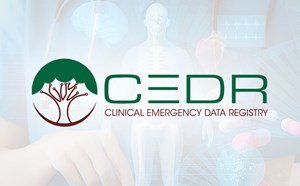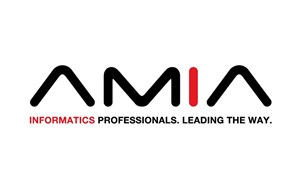
Today’s Rant: ED EMR Documentation, Billing and Coding and Advanced Practice Providers
As an Emergency Physician and Clinical Informatisist, I have some things to say. You probably do too, so feel free to contribute to this Newsletter. Here’s some sage advice, along with a few pet peeves.
NOTE: The following is loosely-based on a real case. (Unfortunately) you can’t make this stuff up. The purpose of this case study is to raise awareness of common issues. It is not to disparage EMRs or clinicians (APPs in this case). There are good and not so good ones everywhere.
CASE HISTORY: Dog Bite to the Face – How this could cost you a million bucks!
While visiting grandpa, a 16-month old female is bitten by his dog on the left cheek. No vital structures (e.g. eyelids, mouth, nose, etc.) are involved. There are 4 puncture wound lacerations, 3mm, 3mm, 4mm, & 5mm = Total 15mm. The child has not received any immunizations to date. There are no other injuries other than surrounding bruising and abrasions. Grandpa takes her to a local ED, outside of insurance network. Note the family was with the child at all times during the ED visit and recorded their observations.
ED CARE: The child is seen by an (unsupervised) APP (NP). A cursory exam is performed, topical anesthesia (ineffectually) applied, wounds are cleaned, tissue adhesive applied, then steri-strips applied over the dried adhesive. A dose of Augmentin is given in the ED, with a prescription for a 7-day course. Although noted as not up-to-date, no tetanus toxoid is given. Total time in treatment room was 20 minutes and arrival time to discharge <1 hour.
OBVIOUS ISSUES:
- Tissue adhesive is contraindicated in the treatment of dog bites. And in this case largely ineffective for cosmesis, likely due to incorrect application (perhaps fortunate, considering).
- Steri-strips fell off within about 8 hours, as did about half of the tissue adhesive (see above).
- Tetanus toxoid was not offered\given (subsequently given by PCP at follow up 3 days later).
ADDITIONAL ISSUES AFTER CHART REVIEW:
Documentation:
- Documented ESI Level = 4; Triage nurse estimates lacerations to be 5cm total (grossly inaccurate).
- Total laceration length noted in the chart by the APP was 3cm (100% error) resulting from the fact the APP did not actually measure the wounds (confirmed by family). The difference in billing between 1.5cm (actual) & 3.0cm is significant.
- The APP appears to have used an “adult” EMR documentation template resulting in multiple (even comical) errors such as “Patient was awake, alert, oriented to person, time, place and surroundings” and “Psychiatric: Cooperative, appropriate mood & affect, normal judgment”, amongst other impossible observations in a 16 month-old.
- The APP failed to actually perform an exam other than a brief look at the wounds, e.g. documented the mouth was normal, but never actually looked into the mouth (confirmed by family) to observe if the wounds were full thickness, possibly extending into the oral mucosa
- APP stated, “Discussed in great detail options for closure with either 1 or 2 sutures to laceration versus Dermabond and Steri-Strips. Parents agree that they prefer Steri-strips and Dermabond.” Family recalls a simple question, “Do you want stiches or glue?” The truth is probably somewhere in between, but regardless, from a standard of care perspective, the appropriate consideration was sutures or nothing, no matter how “detailed” the discussion.
- Immunization (tetanus) discussion documented, but did not actually occur (confirmed by family).
IT GETS WORSE
About 12 hours after the ED visit, after the Steri-Strips & Dermabond started to fall off, the child’s mother called an ED physician friend to ask what to do. At that point, nothing more could be done as the window for primary closure had passed, except to recommend a tetanus shot by the PCP on Monday.
Then the bill came . . .
BILLING DETAILS:
- Visit Level was billed as a 99283, which might have been appropriate if the care & documentation supported it. For reference, Medicare pays ~$80. (Charge $930)
- The procedure was billed as “Wound Repair: Simple\Superficial”. CPT Code not provided, but likely 12013 for 2.6-5cm laceration repair, which for reference Medicare pays ~$230. Correct code should have been 12011 for laceration repair <2.5cm. (Charge $850)
- Ancillary Charges: $338 total
- Augmentin (one dose) = $95
- Dermabond = $135
- Steri-Strips = $10
- Hexachlorophene soap = $18
- LET topical anesthetic = $80
So, does $ 2,118 for billed charges pass the “sniff test”? For some reason (a national insurance carrier) the contracted discount was only 10%. The parents were out of pocket $1900. That’s roughly $3000 per hour (based on about 30 minutes patient care time) just for the provider. No EP was involved or consulted on the care.
OUTCOME:
For perhaps obvious reasons, ultimately the bill was written off. It is difficult to say, but the child may require scar revision at some point as the opportunity to achieve optimal cosmesis was lost due to inappropriate care.
WHAT CAN WE LEARN?
- Fee Schedules & Insurance Contracts Matter: I understand that we have a perverse system of “charges” because of inane CMS rules. That needs to change, but in the meantime, you should review your fee schedule in light of dramatic increases in out of pocket costs. I also understand that various demographic populations can impact what charges need to be, but they still need to be reasonable. Ask yourself what you can reasonably defend when a case such as this makes it to the local news media. Again, with a shift in first dollar coverage, patients are impacted more than ever before by insurance contracts. Be sensitive to this impact.
- EMR Documentation: While perhaps a necessary evil, EMRs (ED Information Systems or EDIS) are here to stay. Like any tool, EDIS must be used appropriately. It is all too easy to “over-document” due to auto-fill templates and as this case illustrates, choosing an incorrect template. A full treatment of this topic is beyond the scope of this article, but as part of your regular QA/CQI process a certain percent of charts should be reviewed for “accuracy”. It is as easy to determine if charts are being overly “documented” as it is under-documentation. For example, are there routinely full ROS on virtually every chart, even those that do not require it (e.g. 99281-99283)? Do you see “ROS: All other systems reviewed & are normal”? Just simply ask that provider to name all 14 systems. Most cannot. Ironically, the use of scribes has helped this issue, because they only document what they see and hear. Pictures Are Your Friend: Both the nurse and APP obviously had issues with size. Need to measure something without fighting an upset child? There’s an APP for that. Check out “Ruler + Tape Measure Tools”. Place a quarter in the photo frame as a reference, then measure anything else with the tools and the exact measurements are displayed. Very cool.
- Provider Qualifications: It would be difficult to imagine that a residency trained &/or BC emergency physician would have made the treatment errors in this case, but we all make our fair share. The example here is a “knowledge error” (albeit rather rudimentary) vs a “cognitive error” (more common with EPs). But the point being, if you use APPs in your ED, oversight is critical even for minor cases. APPs simply cannot be expected to have the same level of expertise as EPs. Amongst other things, APPs should be instructed that they must ask for supervision anytime they are unsure or the first few times they are faced with any particular condition. At this level, knowing what they do not know is super important. Knowing when not to do something is also more important than when to use it.
- Giving First Antibiotic Dose: I will not argue the questionable necessity of antibiotics in this case, but as a resident I was taught that giving the first dose of an antibiotic in the ED was standard of care. Now I am not so sure that is true and it has significant financial implications. An outpatient pharmacy RX for Augmentin costs between zero (insurance) to $12 (retail). Charging almost 10X for one dose IMO is unconscionable. With ready availability of 24 hour pharmacies and proper instructions, allowing the RX to be obtained as an OP is perfectly reasonable. You at least owe your patients the courtesy of knowing how much it will cost.
- People Are Watching (Documenting): There are many things to be learned from the flurry of recent sexual harassment allegations. Perhaps not so obvious is that things that sound true are likely to be taken that way. Another is everyone has a body camera, and willing to use it. When at work, you should behave as if you are being recorded. You may very well be. Now that patients are personally responsible for thousands of dollar for even relatively minor care, they are going to pay attention. Will your own documentation hold up to comparison to a recording?
- Do Not Underestimate the Resolve of Your Patients: Here is a list of potential adverse outcomes of this case with an estimate of what it might cost (settlement, attorney fees, fines, etc.):
- Medical Malpractice: $30,000-$50,000
- Billing Fraud: $25,000 to millions
- Includes, over-documenting, false documentation, inaccurate documentation
- Whistleblowers (think disgruntled employee) can receive cash rewards of 15-30% of the money that Medicaid\Medicare recovers.
- Disgruntled patients may report suspected activity to the insurer, state agencies (Dept. of Insurance, Attorney General, Medical Board, etc.) and CMS.
- Commercial Insurance Carriers: $25,000 to millions
- Healthcare insurers may cancel contracts or assess fines
- Medical malpractice carriers may cancel your coverage or charge you more.
- Regulatory Boards (Medical &/or Nursing Board): $25,000 to $50,00
- Documentation issues may be considered “unprofessional conduct” and subject to sanction by oversight boards: Medical (Allopathic) for MD & PAs\Osteopahtic for DOs\Nursing Board for NP
- Defending such can be expensive & result in multiple untoward consequences including loss of license.
- EMTALA: $102,000 per violation
- As most know, APPs in the ED must be designated as “Qualified Medical Providers” (QMP) by the hospital governing board in order to provide an EMTALA Medical Screening Examination.
- What some do not know is that this designation must be done on an individual basis. In other words, each individual person acting in this role must be reviewed by the governing board and designated (credentialed) as such. Merely having a designation in the hospital rules or medical staff bylaws that any PA/NP acting in the role as an APP are QMPs is not sufficient.
- There must also be evidence of sufficient training for such an individual to provide these services. A basic lack of knowledge demonstrated by gross malpractice could bring these qualifications into question. In other words, you can’t just put a Psych NP in the ED and have them act unsupervised.
If you got to the end of this article, good for you. Now get back to work and stop wasting time reading.
Todd B. Talor, MD, FACEP
Emergency Physician & Independent HIT Consultant
Certified Emergency Medicine, ABEM
Certified Clinical Informatics, ABPM



